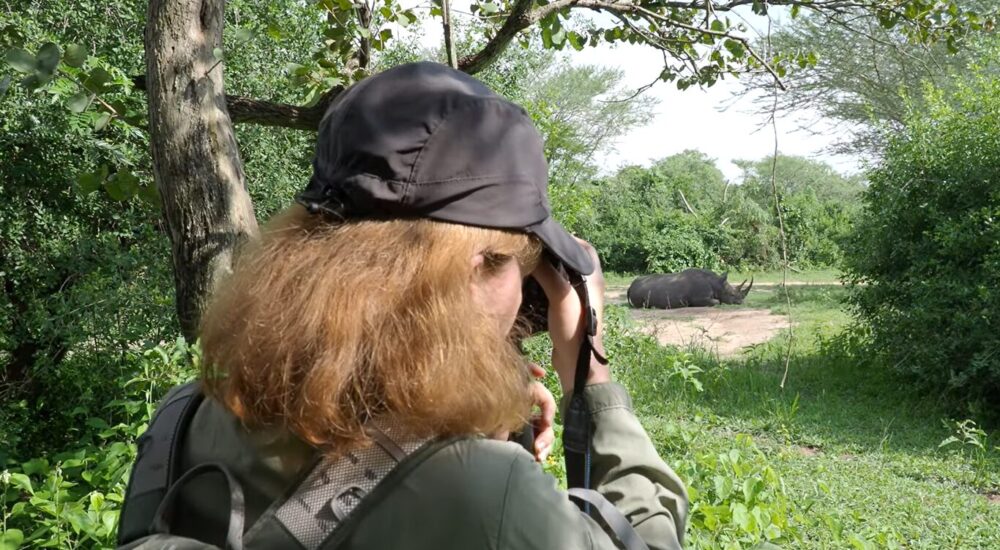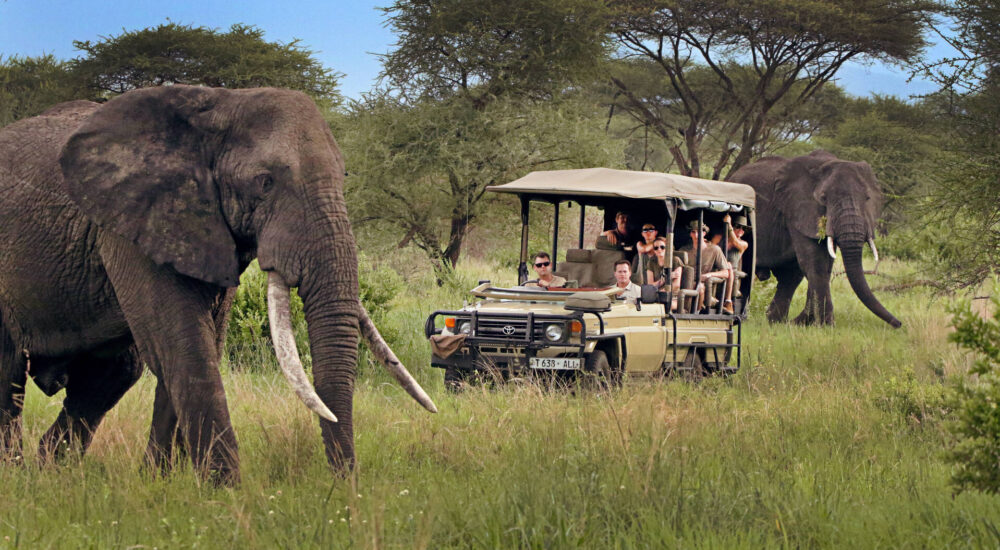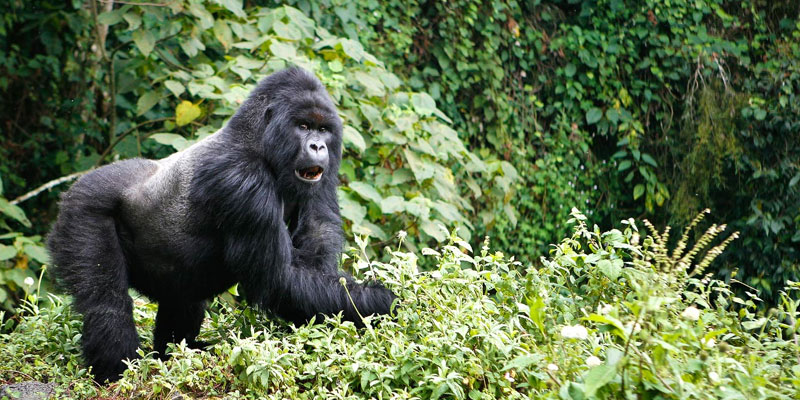Planning a safari with your family? East Africa is home to some of the most…
Top activities & attractions in Nyungwe forest Rwanda
Top activities & attractions in Nyungwe forest Rwanda – Chimpanzee tracking and Canopy walk.
The best things to do and see when monitoring chimpanzees in Rwanda’s Nyungwe forest. For most people, the primary reason to visit Rwanda is to go gorilla trekking. The famed mountain gorillas are certainly a highlight, but there is much more to see and do in this hill area. Many people are hesitant to visit Rwanda because to the high expense of gorilla permits; however, you may have an equally amazing experience while spending much less money by tracking chimpanzees in Nyungwe Forest.
Tourists may meet park rangers at one of three welcome centers in Nyungwe Forest: Uwinka, Kitabi, or Gisakura. They are asked to be at the reception as early as 4:30 in the morning, and by 5 in the morning, they are to be on their way to the trail head. The trekking party sends out scouts ahead of time to locate them and relay information to the ranger guides.
Visitors to Nyungwe Forest National Park spend only an hour in the company of chimpanzees, but they get a close look at the primates as they go about their daily lives, revealing traits and actions that are very similar to those of humans. The primates share 98.7 percent of our DNA. In addition to their ear-piercing screams, hoots, and thundering bark and buttress hits, chimpanzees also communicate using these means.
Because of the vastness of the forest and the landscape, the habituated chimpanzee population in Nyungwe forest is larger than average, numbering about 60 individuals. Contrast this with the group in Cyamudongo forest, where there are only about 30 chimpanzees, and you’ll have a much better chance of spotting one in its little habitat.
Walking with chimpanzees is quite different from trekking with mountain gorillas since, on the former, you’ll likely see the primates darting about in the treetops, and on the latter, you’ll likely have to dash after them to catch up.
Tracking chimpanzees
Nyungwe Forest National Park is a popular destination for chimpanzee trekking since it is home to Rwanda’s biggest chimpanzee population—about 400 individuals. Before venturing into the forest to see the chimpanzees, tourists may take a shuttle to one of three starting points: Gisakura, Uwinka, or Katabi. There, they will undergo a brief orientation on the proper way to trek.
![]()
The comparatively inexpensive cost of 60 USD for chimpanzee trekking makes it an absolute must-do on every Rwanda safari, unlike mountain gorillas. Meeting chimpanzees is like witnessing a human-like quality materialize before your eyes. You’ll observe their eating routines and the way mature females care for their kids much like human moms. It’s really a fascinating experience.
For an hour, visitors may observe and interact with these docile giants, but only with a proper trekking permission. Because they are so similar to humans, chimpanzees may easily get human illnesses like the flu and cough. To further reduce the risk of disease transmission, visitors are asked to maintain a seven-meter distance from the apes.
Rainfall in tropical regions
Kamiranzovu Waterfall, which originates in the Kamiranzovu Marshlands in Rwanda’s southeastern Nyungwe Forest National area, is now an essential stop for each tourist visiting the area. Despite Nyungwe Forest National Park’s reputation for chimpanzee trekking in Chamudongo, the Kamiranzovu Waterfall has recently become a popular attraction for tourists. There are two sides to the waterfall; one is on top of large boulders and makes for great picture ops, while the other is directly in front of the fall.
The Kamiranzovu Waterfall is not easily accessible; reaching it requires physical fitness, perseverance, determination, patience, and a strong sense of duty. It requires hiking through dense, tropical foliage in Nyungwe National Park. Despite being just 10 kilometers away from the starting point, the steep scenery makes the route relatively challenging and time-consuming.
Nature strolls and hiking routes
The ideal way to fully appreciate the splendor of Nyungwe woodland National Park is on a woodland walk or hiking track. Approximately 130 kilometers of hiking routes wind through the national park, taking visitors deep into the forest’s core. With its own set of attractions, each path leads to a distinct destination, whether it a marsh, a waterfall, or a cave.
Among the many hiking paths in the area are the following: Igishigishigi, Bigugu, Ngabwe, Isumo waterfall, Kamiranzovu marsh, Karamba birdwatching, Source of the Nile, Irebero, Muzimu, Imbaraga, Congo Nile, Umoyove, and Rukuzi. Because some paths are longer and some shorter, hikers of varying abilities and fitness levels will be able to find something they love.
A woodland walk in Nyungwe woodland National Park might range from three hours to three days, depending on the track one chooses to take. As they make their way through the forest, hikers may relax and take in the serene atmosphere, all the while the lilting melodies of birdsong reverberate in their heads.
Zip line
Only in East Africa’s Nyungwe Forest National Park is it possible to conduct the 200-meter canopy walk above the forest floor. Guests may enjoy a bird’s-eye view of the national park, its animals, nearby towns, the Virunga volcanoes, and tourist sites in the surrounding countries as they stroll along the man-made route that dangles 60 meters over the forest floor.
The Uwinka Information Center, which serves as both the beginning and ending point of the two-hour walk, is located at the national park headquarters. The minimum age to participate in the walk is six years old, and all participants must possess a valid permission. Interestingly, the canopy walk only costs 60 USD, which is a steal considering the exhilarating experience it provides that will stay with you forever.
Bird watching
Among Rwanda’s top birding spots is Nyugwe Forest National Park, which is home to more than 300 different bird species. There are a total of 121 woodland birds and 27 albertine rift valley endemics in Nyungwe forest.
Among the many bird species found in Nyungwe Forest National Park, some of the most common ones include: Rwenzori Turaco, Great blue Turaco, Chapin’s flycatcher, White-tailed flycatcher, Rwenzori batis, Barrard’s long-tailed cuckoo, Rwenzori near jar, Rwenzori hill babbler, yellow-eyed black flycatcher, Neumann’s warbler, Congo bay owlet, mountain sooty boubu, and Chapin’s flycatcher. The best way to see these birds in the forest is with an experienced guide who can point them out and tell you everything about their interesting personalities.
Tracing the adventures of monkeys
In addition to chimpanzees, the national park of Nyungwe Forest is a great place to go monkey trekking since it is home to more than 300 different kinds of monkeys. Among the many monkey species you could see at Nyungwe Forest National Park are L’Hoests monkeys, black-and-white colubus, blue monkeys, and red-tailed monkeys. All that distinguishes these monkeys is their coat coloration; otherwise, they’re very much alike.
Due to their constant motion, cries, and leaping over you over tree branches, monkeys are vivacious and energetic animals, making monkey trekking a really enjoyable experience.
Consequently, plan a safari to Nyungwe Forest National Park and take part in all the activities and attractions; doing so will provide you with an extraordinary experience. For information on the best things to do and see in Rwanda’s Nyungwe forest, get in touch with Monumental Expeditions and Safaris.


